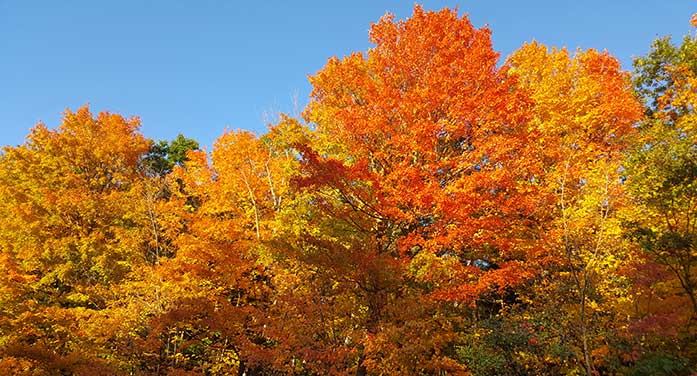 Last fall when I looked out my door, most of the leaves had fallen, the nights were very chilly and there truly was frost on the pumpkins. Now, as the end of the winter season approaches, I thought again about the seasons and how they got their names.
Last fall when I looked out my door, most of the leaves had fallen, the nights were very chilly and there truly was frost on the pumpkins. Now, as the end of the winter season approaches, I thought again about the seasons and how they got their names.
I simplistically thought I could come up with logical derivatives for the season’s names. But were my assumptions correct? The plants do spring forth in the spring and leaves fall in the autumn, but what about the other two seasons?
Let’s look a bit closer and see if we can figure out where these interesting names actually came from.
Winter in the northern hemisphere runs from Dec. 21 to Mar. 21, approximately.
According to most sources I could find, to determine where the word winter came from, we have to look back at the Proto-Germanic language, which was derived from Indo-European languages that predate the Roman Empire. In that language, the fourth and coldest season of the year was referred to as ‘wintruz.’
Other variations were adopted as other cultures and languages sought to name the season using their own vocabulary. So ‘vinter’ (Danes and Swedes), ‘wintar’ (Old High German and later Old Saxon and Old English), ‘wentruz’ (Proto-Germanic) and ‘vetr’ (Norse) were born.
The basis of all these words is likely an aberration of the word ‘wet,’ which makes sense.
Spring lasts from Mar. 21 to Jun. 21 in the north. This is the time of rebirth, with long sunny days and warm nights.
Originally, this season wasn’t called spring at all, but rather lent or the Lenten season. But despite our immediate presumption, this doesn’t follow the biblical reference but comes from an Old English word ‘lengten,’ which means longer or greater in length, referring to the length of daylight.
In the 1300s, ‘lent’ was replaced with springing time, which was eventually shortened to spring-time then spring. The Norse referred to ‘springa,’ Old Saxon used ‘springan’ and the Middle English language referenced ‘springen,’ meaning to jump, spread, grow or burst forth. In the Proto-Germanic language, reference is made to ‘sprengen,’ meaning to hurry or hasten, while the Greek used ‘spertchesthai.’
Summer runs from Jun. 21 until Sept. 21.
It looks like many languages used a similar word to describe this hottest season of the year. Here we have Sanskrit (‘sama’ equals season), Middle English (‘sumer’), Old English (‘sumar’), Proto-Germanic (‘sumra’), Old High German, Old Norse and Dutch (‘zomer’ or ‘somer’) and German (‘sommer’).
All were likely derived from the Proto-Indo-European word ‘sem,’ meaning together or one.
Autumn runs from Sept. 21 to Dec. 21.
One source cites that autumn comes from the Latin language (‘autumnus’); itself derived from Proto-Indo-European words for cold (‘h₃ewǵ’) and dry (‘h₂sows’) and likely linked to the archaic Etruscan language. Other cultures referred to ‘autumpne’ (Old French and Middle English).
So far, so good, but this is one season where there was little consistency in the derivatization of the word across cultures. For example, the Greek referred to the waning of summer (‘phthinoporan’), Old Irish references ‘fogamar’ (under winter), while the Lithuanian culture referred to ‘rudas’ or ‘ruduo,’ meaning reddish, perhaps referring to the colour of some leaves.
The word fall is most likely simply a modernization of the term ‘falling of the leaves,’ as one would suspect, but I couldn’t find a conclusive derivation for this term.
Whatever you call them, I’m glad we live in a climate with four distinct seasons we can celebrate in different ways.
Geoff Carpentier is a published author, expedition guide and environmental consultant. Visit Geoff on LinkedIn, Instagram and Facebook. For interview requests, click here.
The opinions expressed by our columnists and contributors are theirs alone and do not inherently or expressly reflect the views of our publication.
© Troy Media
Troy Media is an editorial content provider to media outlets and its own hosted community news outlets across Canada.

